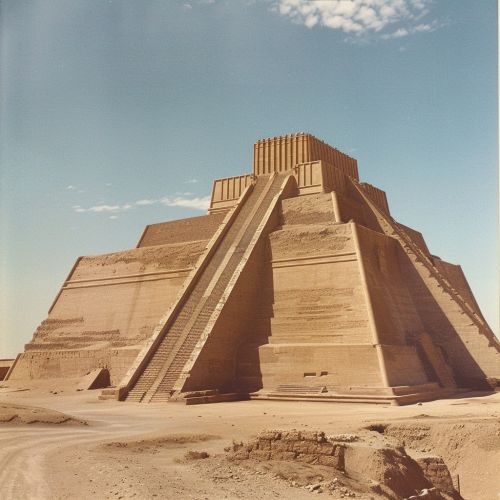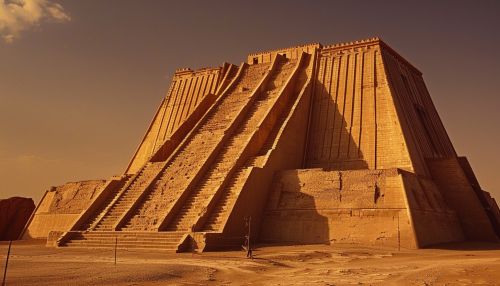Ziggurat
Origins and Development
The concept of the ziggurat has its roots in ancient Mesopotamian civilization. The term itself is derived from the Akkadian 'zaqaru', meaning 'to build high'. These were massive structures, often reaching heights of up to 300 feet, and were constructed using sun-dried bricks. The ziggurats served as the center of religious and social activity, often housing temples, administrative offices, and sometimes even royal quarters.


Architectural Features
Ziggurats were characterized by their step-like design, with each level smaller than the one below it. This created a terraced effect, with each terrace often being planted with trees and shrubs, creating what is sometimes referred to as a 'hanging garden'. The topmost level typically housed a temple or shrine, dedicated to the city's patron deity. Unlike the pyramids of Egypt, which were solid structures, ziggurats were hollow, with rooms and chambers within.
Construction Techniques
The construction of a ziggurat was a massive undertaking, requiring the labor of thousands of workers over several years. The primary building material was mud-brick, made from the abundant clay found in the region. These bricks were then sun-dried or fired in kilns to harden them. The bricks were laid in a specific pattern, with each layer offset from the one below it, to provide stability. The exterior of the ziggurat was often covered in a layer of fired bricks to protect it from the elements.
Cultural and Religious Significance
Ziggurats were more than just architectural marvels; they held deep cultural and religious significance for the Mesopotamian people. They were seen as the dwelling place of the gods, with the temple at the top serving as the literal house of the deity. The ziggurat was also a symbol of the city's wealth and power, with its size and grandeur reflecting the city's status.
Decline and Legacy
With the fall of the Mesopotamian civilizations, the construction of ziggurats came to an end. Many of these ancient structures have been lost to time, with only their ruins remaining. However, the legacy of the ziggurat lives on in the form of the pyramidal structures found in many cultures around the world, from the pyramids of Egypt to the Mayan temples of Central America.
